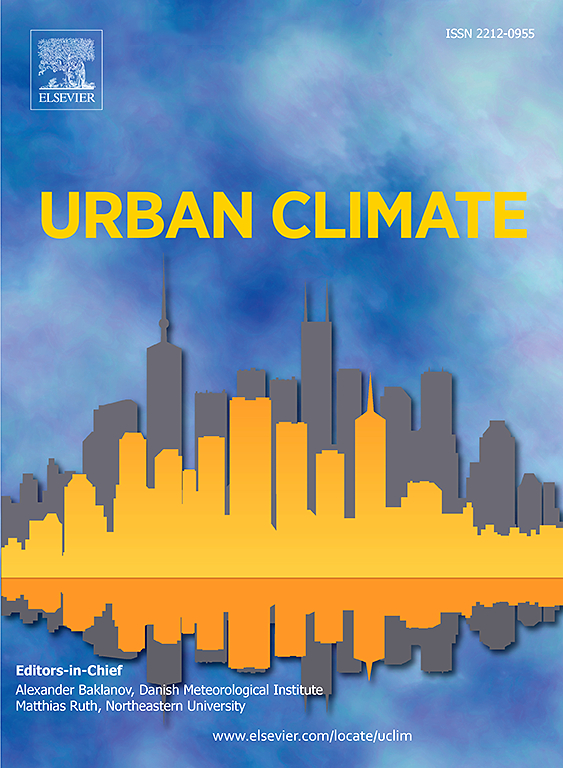How do geometric forms of public squares affect year-round thermal comfort? A field study in a cold coastal city
IF 6
2区 工程技术
Q1 ENVIRONMENTAL SCIENCES
引用次数: 0
Abstract
This study investigates the effects of geometric forms on thermal comfort in public squares in cold coastal cities. Field measurements were conducted across four representative squares during typical meteorological days throughout the year to collect climatic parameters, along with skin temperature and thermal comfort from 16 healthy university students. The Universal Thermal Climate Index (UTCI) was used as the thermal index, revealing differences in microclimatic conditions, physiological parameters, and thermal comfort. The results show that: (1) Geometric forms significantly influence microclimate and thermal comfort. Enclosure levels and sky view factor (SVF) primarily impact temperature, wind speed, and solar radiation, while orientation introduces seasonal variations through monsoon and maritime effects. (2) Higher enclosure levels and lower SVF are associated with higher neutral Universal Thermal Climate Index (NUTCI) values, with semi-enclosed spaces showing a broader thermal neutrality range. (3) Geometric forms affect the sensitivity of mean skin temperature (MST) to thermal changes, with lower SVF resulting in higher MST under neutral thermal sensation (TSV = 0). (4) In Dalian, the NUTCI for neutral thermal sensation ranges from 11.80 °C to 21.90 °C, while the no thermal stress range spans 5 °C to 31.80 °C. These findings provide insights for designing and renovating public squares in cold regions to improve outdoor thermal comfort and encourage outdoor activities.
公共广场的几何形状如何影响全年的热舒适?在寒冷的沿海城市进行实地考察
本研究探讨了寒冷沿海城市公共广场几何形态对热舒适的影响。在全年的典型气象日,在四个具有代表性的广场进行了现场测量,以收集16名健康大学生的气候参数,以及皮肤温度和热舒适。采用通用热气候指数(Universal Thermal Climate Index, UTCI)作为热指数,揭示了小气候条件、生理参数和热舒适的差异。结果表明:(1)几何形态对小气候和热舒适有显著影响。封地水平和天空视野因子(SVF)主要影响温度、风速和太阳辐射,而朝向通过季风和海洋影响引入季节变化。(2)较高的封闭水平和较低的SVF与较高的中性通用热气候指数(NUTCI)相关,半封闭空间的热中性范围更广。(3)几何形状影响平均皮肤温度(MST)对热变化的敏感性,中性热感觉(TSV = 0)下SVF越低,MST越高。(4)大连市中性热感觉的NUTCI范围为11.80 ~ 21.90℃,无热应力范围为5 ~ 31.80℃。这些研究结果为寒冷地区公共广场的设计和改造提供了参考,以改善室外热舒适,鼓励户外活动。
本文章由计算机程序翻译,如有差异,请以英文原文为准。
求助全文
约1分钟内获得全文
求助全文
来源期刊

Urban Climate
Social Sciences-Urban Studies
CiteScore
9.70
自引率
9.40%
发文量
286
期刊介绍:
Urban Climate serves the scientific and decision making communities with the publication of research on theory, science and applications relevant to understanding urban climatic conditions and change in relation to their geography and to demographic, socioeconomic, institutional, technological and environmental dynamics and global change. Targeted towards both disciplinary and interdisciplinary audiences, this journal publishes original research papers, comprehensive review articles, book reviews, and short communications on topics including, but not limited to, the following:
Urban meteorology and climate[...]
Urban environmental pollution[...]
Adaptation to global change[...]
Urban economic and social issues[...]
Research Approaches[...]
 求助内容:
求助内容: 应助结果提醒方式:
应助结果提醒方式:


